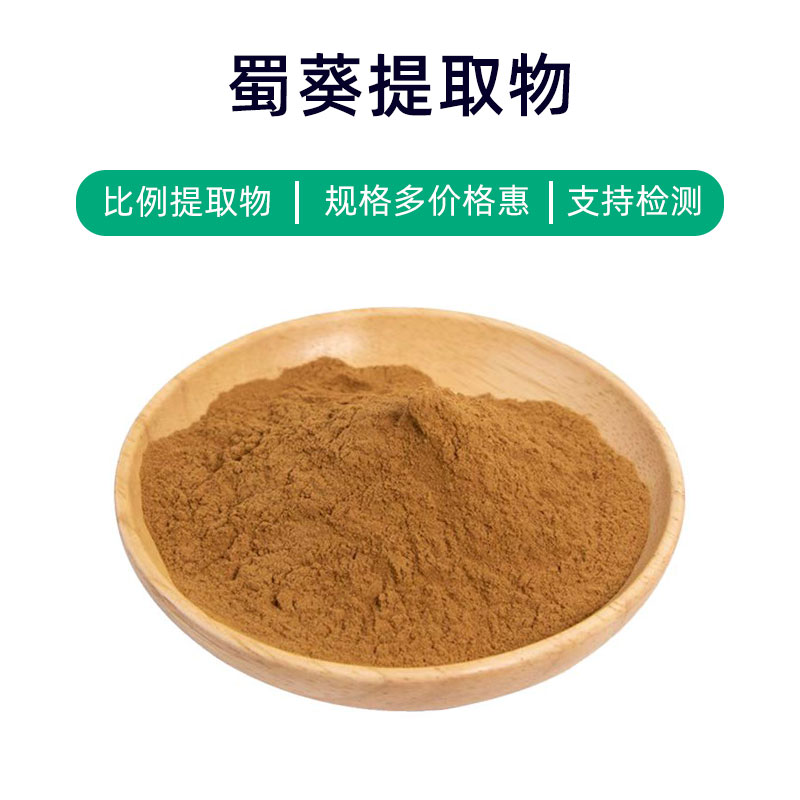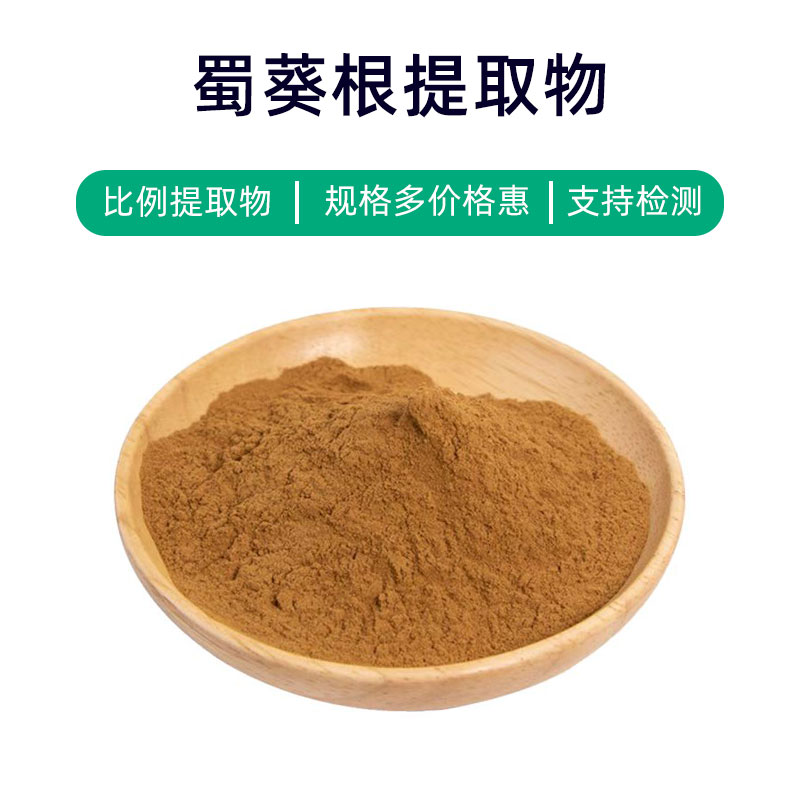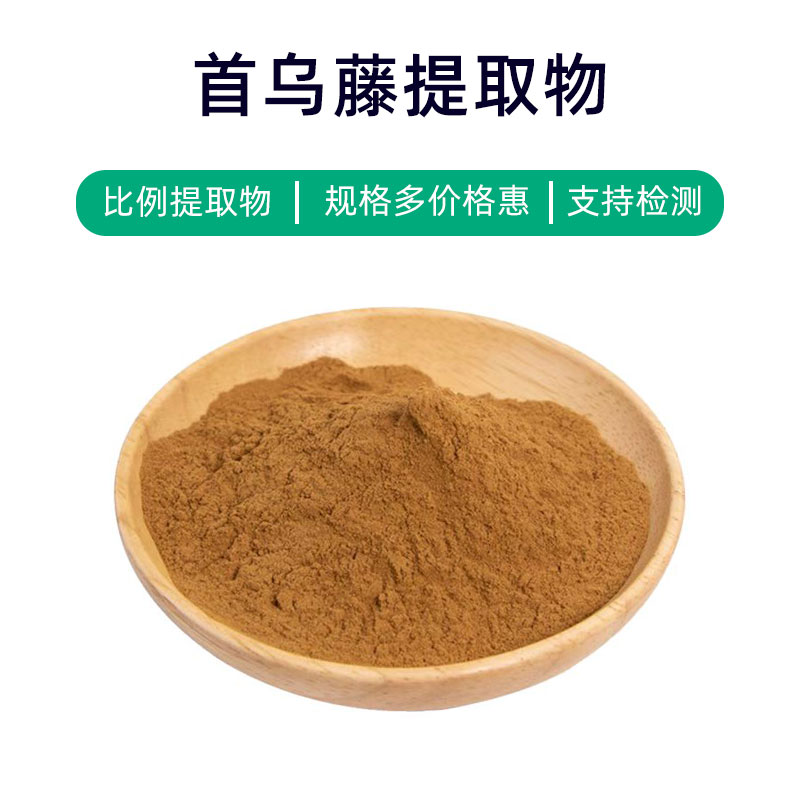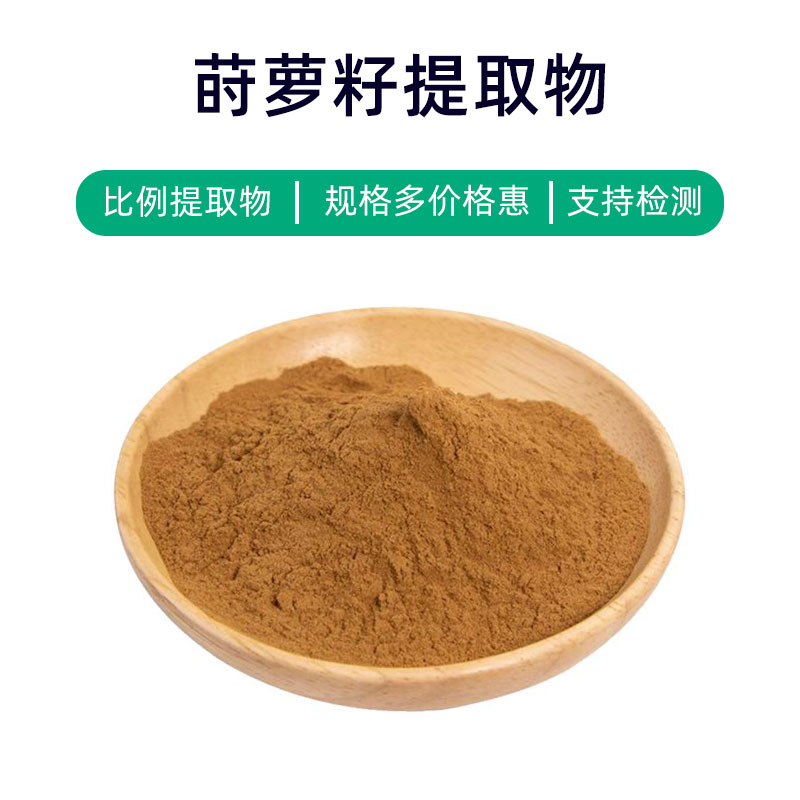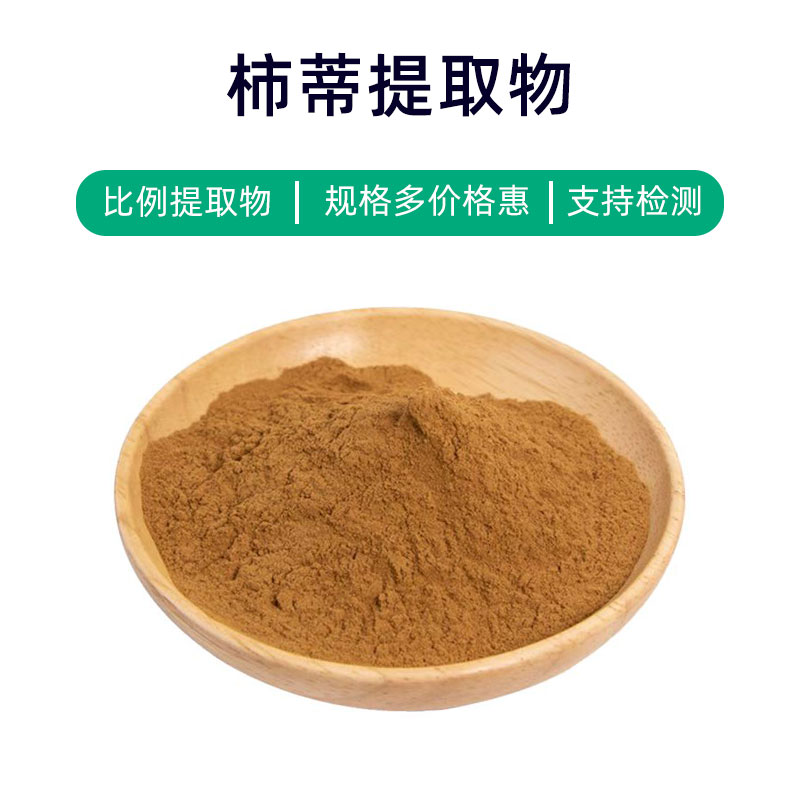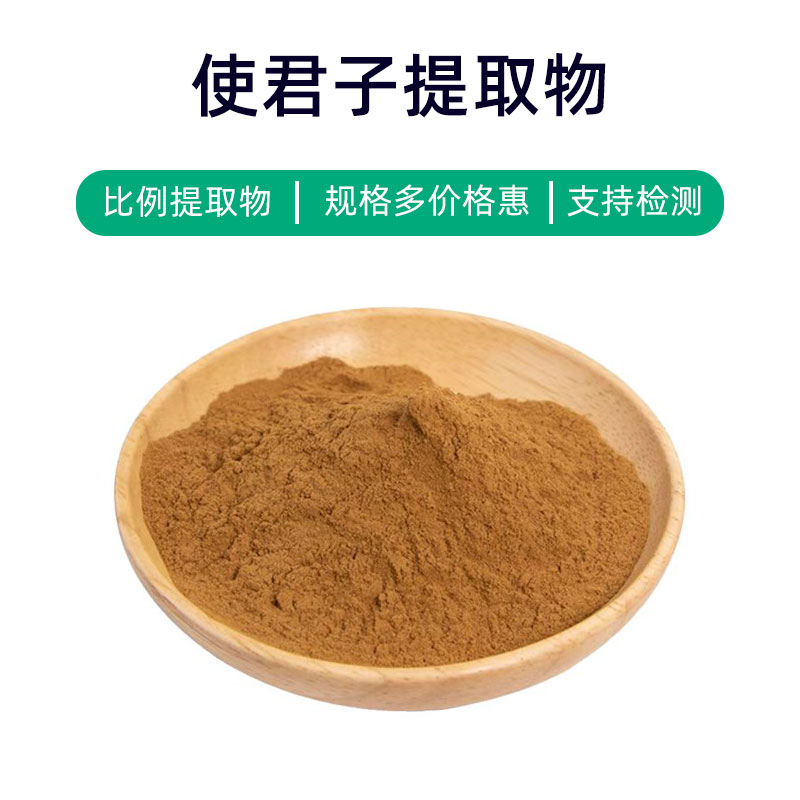Dandelion Root Extract Product Introduction
Dandelion root extract is a natural plant extract derived from the roots of the dandelion plant, primarily consisting of flavonoids, terpenes, and polysaccharides. This extract is widely used in the fields of medicine, dietary supplements, and cosmetics.
In medicine, dandelion root extract is believed to support liver health, aiding in the body’s detoxification functions, and can help improve digestive system functioning. Additionally, it is used to alleviate symptoms such as indigestion and stomach discomfort.
In the realm of dietary supplements, dandelion root extract is often used to manufacture products that help regulate liver and gallbladder functions, contributing to overall bodily health. It is also included in some detox products to promote the body’s detoxification and remove free radicals.
In cosmetics, dandelion root extract is widely incorporated into skincare products due to its antioxidant and anti-inflammatory properties, which help to reduce skin inflammation, eliminate free radicals, and protect the skin from environmental damage. It is also added to some hair care products to improve scalp health and promote hair growth.
Overall, dandelion root extract is a multifunctional natural plant extract with various benefits, playing an important role in the fields of medicine, dietary supplements, and cosmetics.
Dandelion Root Extract Production Process
The production process of dandelion root extract typically includes the following steps:
- Raw Material Collection and Screening: Fresh, high-quality dandelion roots are selected as raw materials. Collected roots are screened to remove surface dirt and impurities.
- Washing and Preparation: The selected dandelion roots are thoroughly washed to remove surface contaminants and microorganisms. The roots are then processed by chopping or slicing to enhance extraction efficiency.
- Extraction: The prepared dandelion roots are placed in extraction equipment, using suitable solvents (such as ethanol or water) for extraction. Parameters during extraction include temperature, time, and solvent concentration.
- Filtration and Concentration: The extract is filtered to remove solid residues and impurities, then concentrated using equipment (such as vacuum concentrators) to gradually remove the solvent.
- Drying: The concentrated extract is transferred to drying equipment to remove moisture, resulting in powdered or liquid dandelion root extract.
- Quality Control: Quality testing of the produced dandelion root extract includes assessing ingredient content, microorganisms, heavy metals, etc., ensuring that the product meets quality standards.
- Packaging and Storage: Qualified dandelion root extract is packaged using appropriate materials to ensure product quality and safety. It is then stored in a cool, dry, well-ventilated environment, away from direct sunlight and high temperatures, to extend its shelf life.
This is the general production process for dandelion root extract, with each manufacturer possibly making adjustments and improvements based on their techniques and equipment.
Dandelion Root Extract Effects, Benefits, and Side Effects
As a natural herbal extract, dandelion root extract is widely used in traditional medicine and modern pharmacology, and has been shown to offer various benefits.
- Antioxidant Properties: Dandelion root extract is rich in natural antioxidants, such as flavonoids and vitamin C, which can neutralize free radicals, slow down cellular oxidation damage, and protect cell health.
- Diuretic and Detoxifying: Traditionally regarded as a natural diuretic, dandelion root extract can promote urine output, assisting in the removal of waste and toxins from the body, thereby improving the internal environment.
- Anti-inflammatory and Antibacterial: Research indicates that dandelion root extract has certain antibacterial and anti-inflammatory properties, capable of inhibiting the growth of bacteria, fungi, and viruses, which aids in the prevention and treatment of infectious diseases.
- Blood Sugar Regulation: Some studies have shown that dandelion root extract may lower blood sugar levels and enhance insulin sensitivity, offering potential for blood sugar control and diabetes prevention.
- Digestive Enhancement: Dandelion root extract is thought to stimulate the secretion of digestive juices and promote gastrointestinal motility, helping to alleviate issues like indigestion, bloating, and constipation.
- Anti-inflammatory Pain Relief: The active components in dandelion root extract exhibit anti-inflammatory effects, which may be beneficial for relieving symptoms of arthritis, rheumatic pain, and muscle soreness.
- Immune Modulation: Studies suggest that dandelion root extract can modulate immune system functions, boosting the body's immunity and helping to prevent infections and enhance resistance.
Despite the many benefits of dandelion root extract, attention should be paid to potential side effects:
- Allergic Reactions: Some individuals may have allergic reactions to certain components in dandelion root extract, such as skin itching and hives, so caution is advised for those with allergies.
- Digestive Upset: High doses of dandelion root extract may cause digestive issues such as bloating or diarrhea. It is recommended to use it under medical supervision and strictly adhere to dosage guidelines.
- Drug Interactions: Dandelion root extract may interact with certain medications, affecting their efficacy or increasing the risk of adverse effects, such as diuretics or anticoagulants; therefore, it should be used cautiously in combination with other drugs.
In summary, when used appropriately, dandelion root extract can provide various advantages as a natural herbal extract, but individuals should consult a healthcare professional before using it to avoid potential adverse effects.
Dandelion Root Extract Applications and Dosage
Dandelion root extract has a wide range of applications in the fields of medicine, food, and cosmetics. Below is a focus on its applications, usage, and dosages in these areas.
Medical Applications:
- Liver Health: Dandelion root extract is used in liver health products due to its diuretic, detoxifying, and antioxidant actions, helping to eliminate toxins and improve liver function.
- Digestive Issues: In traditional herbal medicine, dandelion root extract is applied to treat digestive system problems such as indigestion, bloating, and constipation; it can be used as an oral medication or dietary supplement.
- Anti-inflammatory and Pain Relief: Dandelion root extract has notable anti-inflammatory and analgesic properties, which can help relieve symptoms of arthritis, rheumatic pain, and muscle soreness.
Medical Dosage:
- Oral Medications: Common oral forms include tablets, capsules, and liquid preparations. The recommended daily dosage for adults typically ranges from 300 to 900 mg, divided into 2-3 doses. Specific dosages should be adjusted according to medical advice and product instructions.
- Topical Medications: Dandelion root extract can also be used in topical formulations such as ointments and patches for localized inflammation and pain relief. Dosages and application frequency should adhere to specific product instructions.
Food Applications:
- Functional Foods: Dandelion root extract is frequently added to functional beverages, dietary supplements, and nutritional products to enhance health, detoxify the body, and boost immunity.
- Flavoring Agents: It can also be used as an additive in flavorings like tea beverages, honey, and juices, imparting herbal flavors and health benefits.
Food Dosage:
- Functional Beverages: The general recommended daily intake is between 1-2 cups, adjusted based on product instructions and individual health conditions.
- Dietary Supplements: Doses should be taken daily according to product guidelines, and it is advisable to follow medical advice, particularly for the elderly and children.
Cosmetic Applications:
- Skin Care: Dandelion root extract possesses antioxidant and anti-inflammatory properties, often included in skin care products such as creams, lotions, and masks to protect the skin, soothe sensitivities, and reduce inflammation.
- Hair Care: It is also utilized in hair care products like shampoos, conditioners, and hair masks, aiding in scalp cleansing, promoting hair growth, and improving scalp conditions.
Cosmetic Dosage:
- Skincare Products: Apply an appropriate amount after cleaning the face, gently massaging until absorbed as per product instructions.
- Hair Care Products: Apply an appropriate amount to damp hair, gently massaging the scalp, and then rinse thoroughly.
Dandelion Plant Overview, Distribution, and Growth Conditions
Dandelion (scientific name: Taraxacum officinale) is a common herbaceous plant in the Asteraceae family. Known for its distinctive appearance and widespread distribution, it is often considered a weed, but its roots and leaves have been used as herbal remedies for centuries in herbal medicine and folk traditions. Below is an introduction to the plant that produces dandelion root extract, its distribution, and growth conditions.
Source Plant Overview:
Dandelion is a perennial herb with a robust root system, erect stem, and a height of approximately 10 to 30 centimeters. Its leaves are long and oval-shaped, deeply lobed with serrated or pinnatifid edges, and the petiole is hollow. The flower heads are yellow and bloom typically from spring to summer.
Distribution:
Dandelions are widely distributed, mainly growing in temperate and subtropical regions but can be found almost globally. They thrive in open fields, grasslands, along roadsides, in wastelands, riverbanks, and in green spaces, exhibiting strong adaptability for growth in a variety of environments.
Growth Conditions:
- Light Conditions: Dandelions prefer full sunlight and grow vigorously in bright environments, although they can also adapt to partial shade.
- Soil Requirements: They have strong adaptability to soil conditions and can grow in fertile soil, poor soil, and sandy soil, but they thrive best in well-draining soil.
- Moisture Conditions: Dandelions are not overly picky about humidity, thriving in dry conditions, but require ample water supply during growth periods.
- Climate Adaptability: Dandelions are highly adaptable to different climatic conditions, able to withstand cold and heat, though extreme drought or severe cold can affect their growth.
In summary, the dandelion is a hardy weed with strong adaptability to various environmental conditions, making it able to survive and proliferate across different geography and climate. Its wide distribution has made its roots and leaves common materials used in folk medicine and in the preparation of herbal remedies and dietary supplements.
Dandelion Root Extract Processing and Storage
The processing of dandelion root extract typically involves the following steps: First, fresh dandelion roots are collected, cleaned, and peeled. They are then cut into small pieces or slices. Next, the prepared dandelion roots undergo grinding, soaking, or extraction to obtain the effective components. Finally, through steps such as filtering, concentrating, and drying, the final dandelion root extract product is obtained. For storage, the extract should be kept in a cool, dry environment, protected from direct sunlight and moisture, to ensure its quality and stability. It is generally recommended to use sealed containers for storage to minimize exposure to air, extending the shelf life.
Monica Sun is a seasoned expert in the plant extraction industry with over a decade of experience in research and production. She specializes in the extraction and purification of plant active ingredients, focusing on driving innovation in natural product applications. Monica has participated in the development of multiple functional plant extracts, delivering high-value natural raw material solutions for the health food, pharmaceutical, and dietary supplement sectors.









